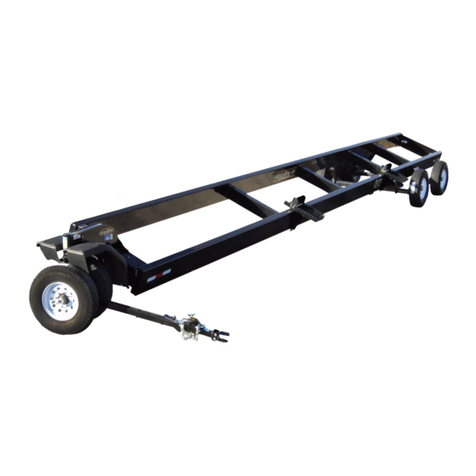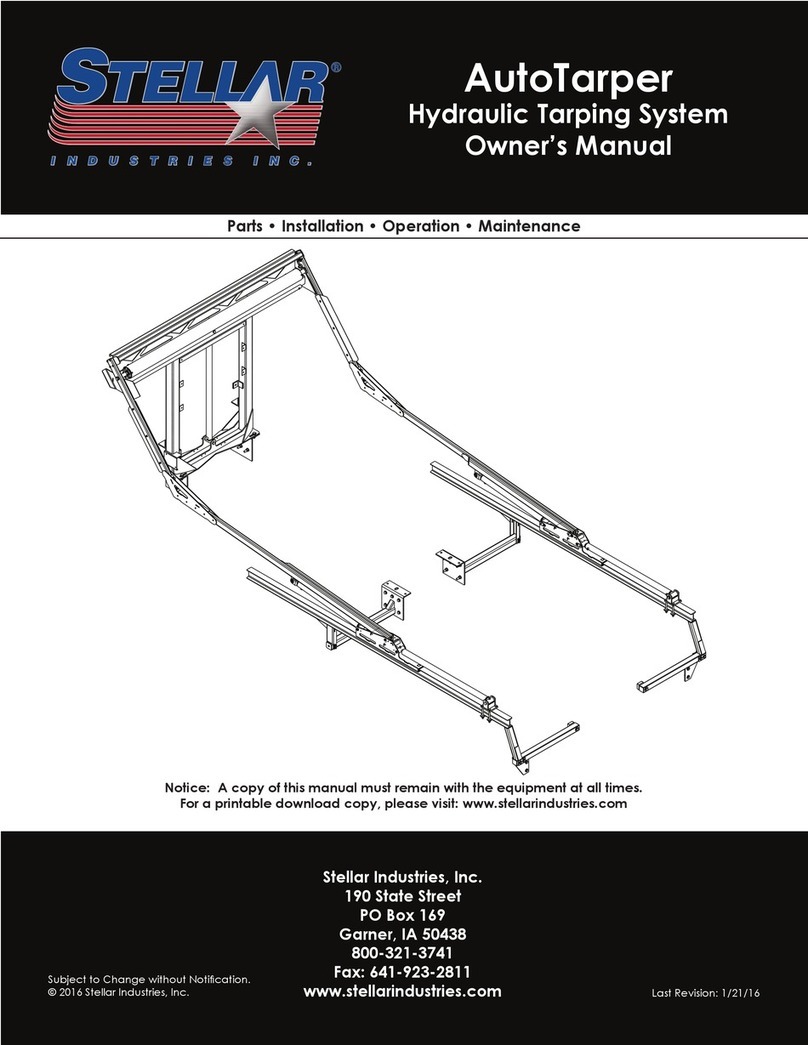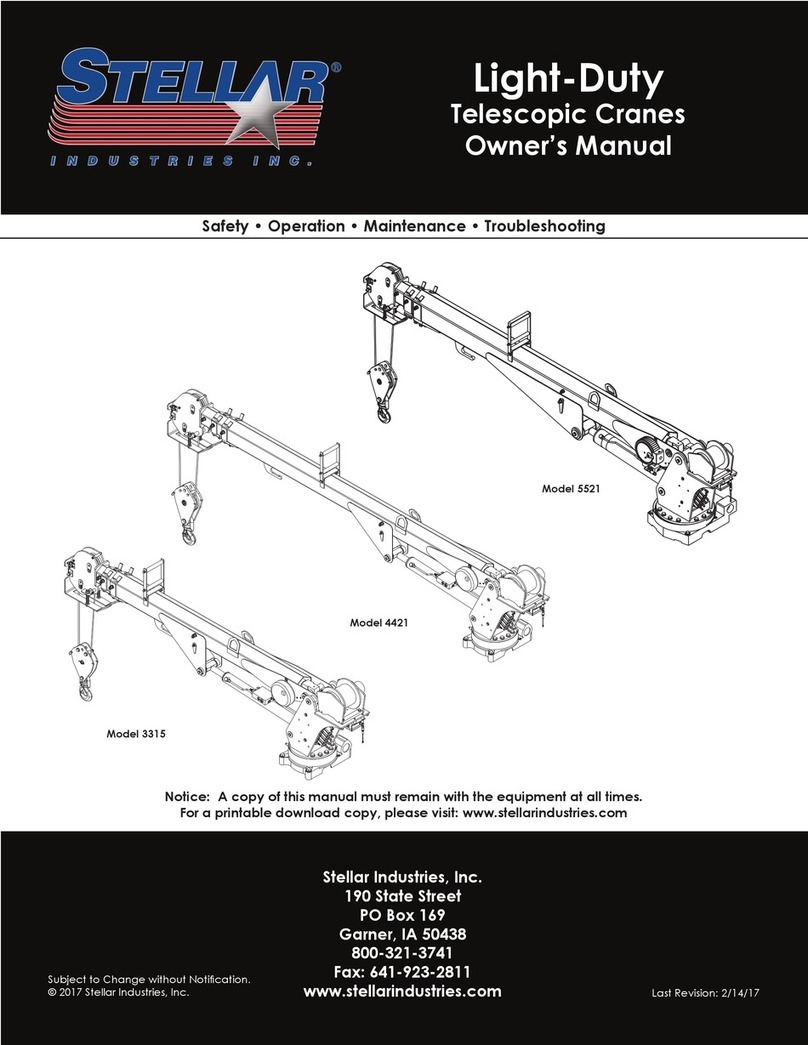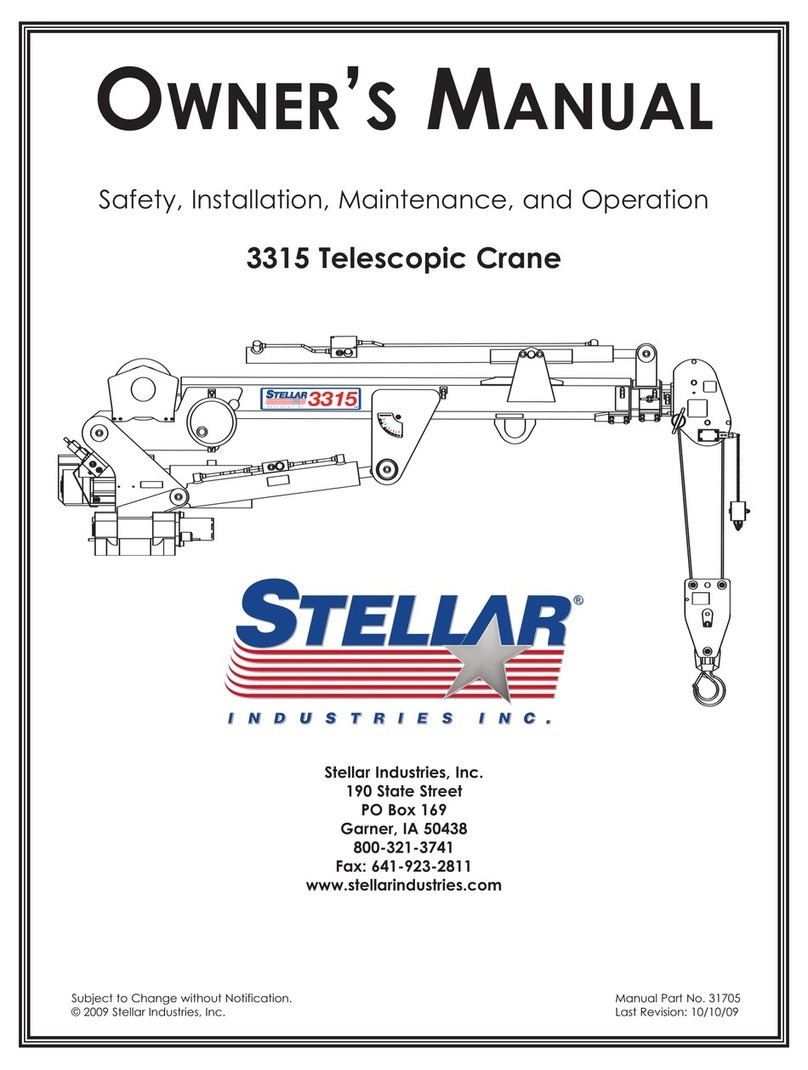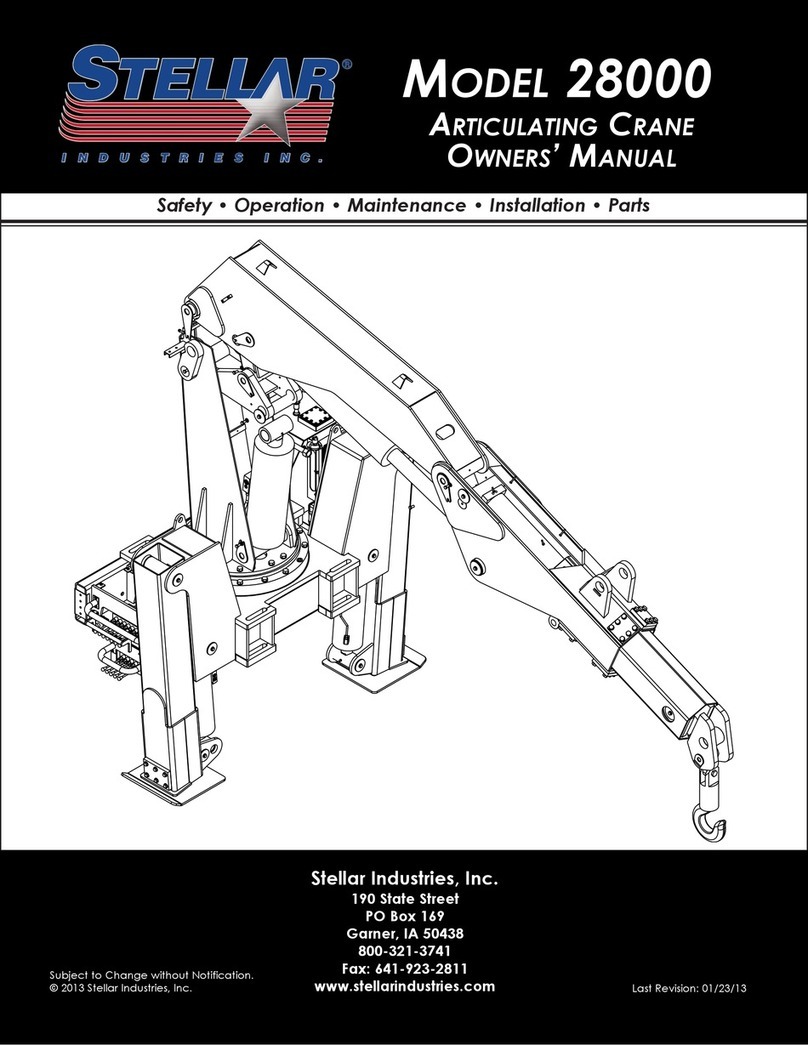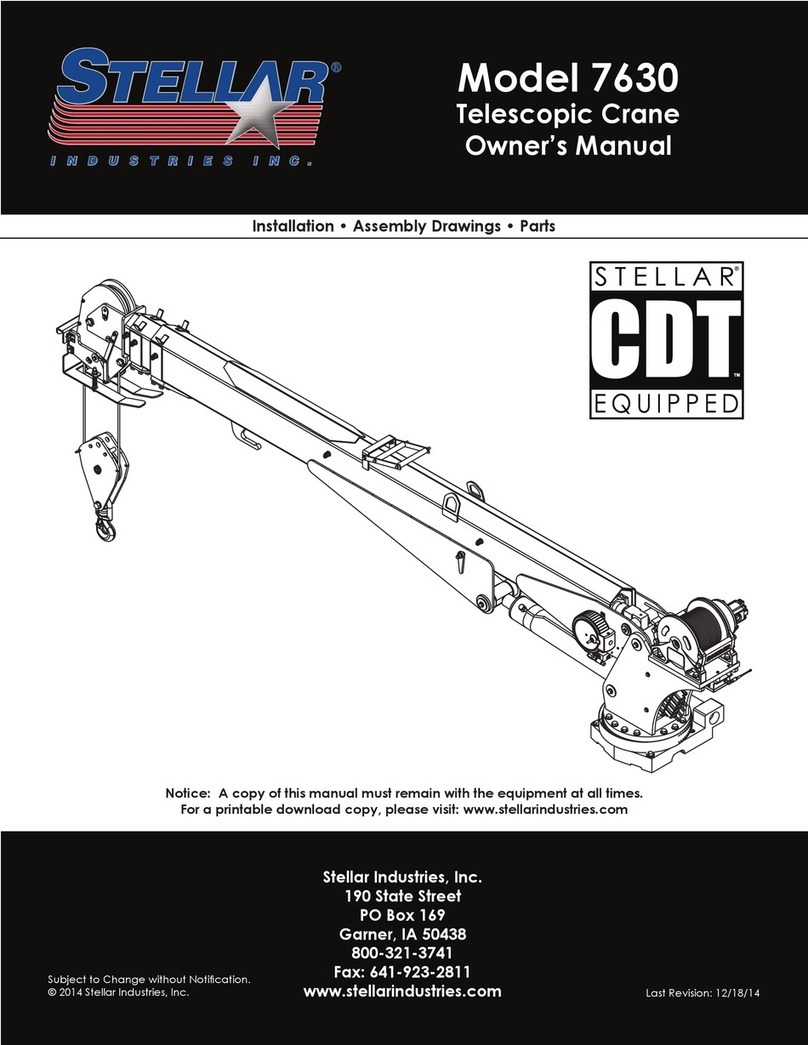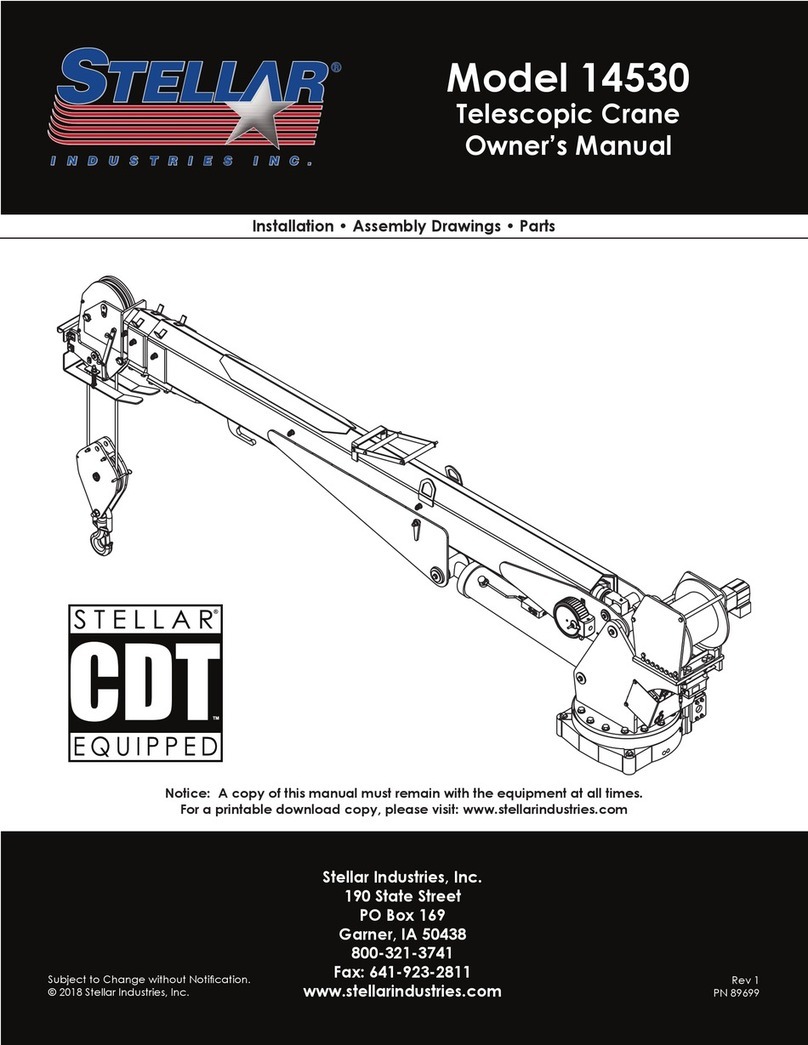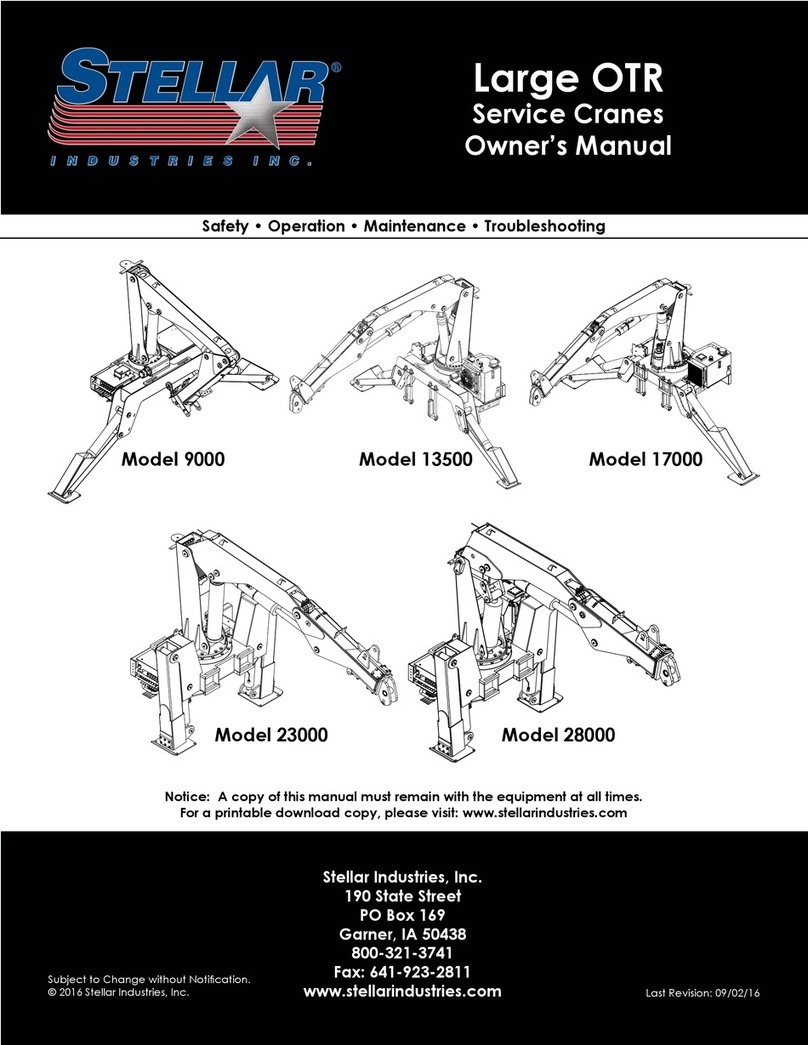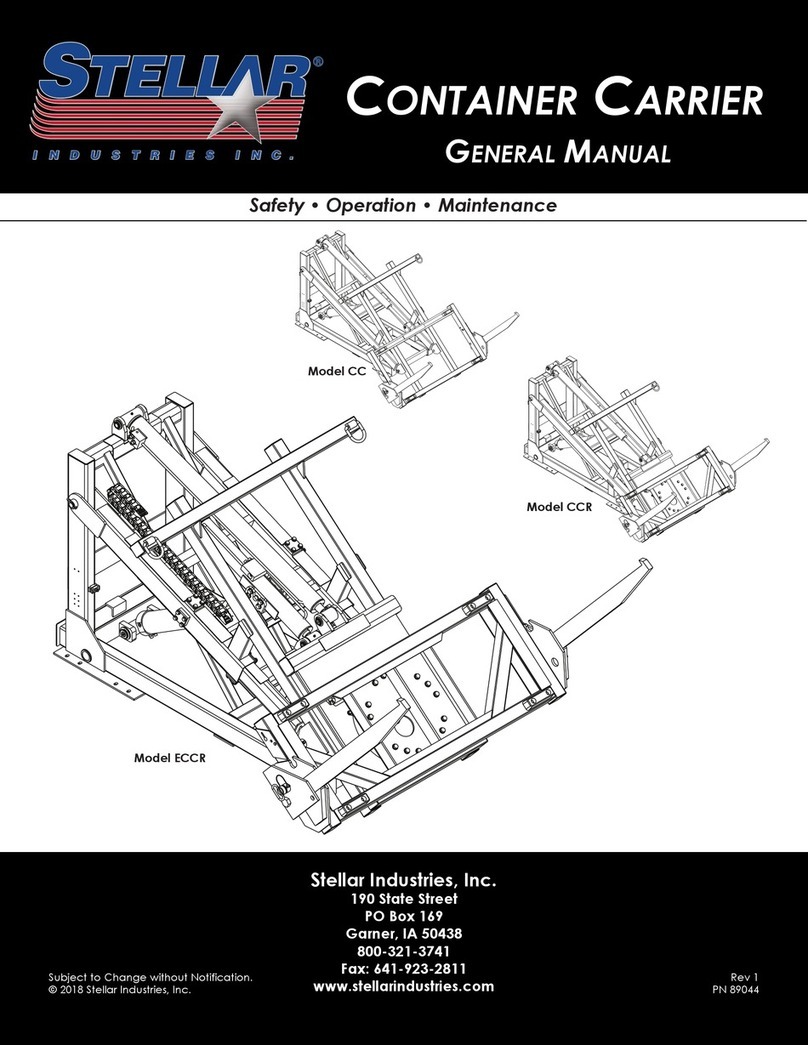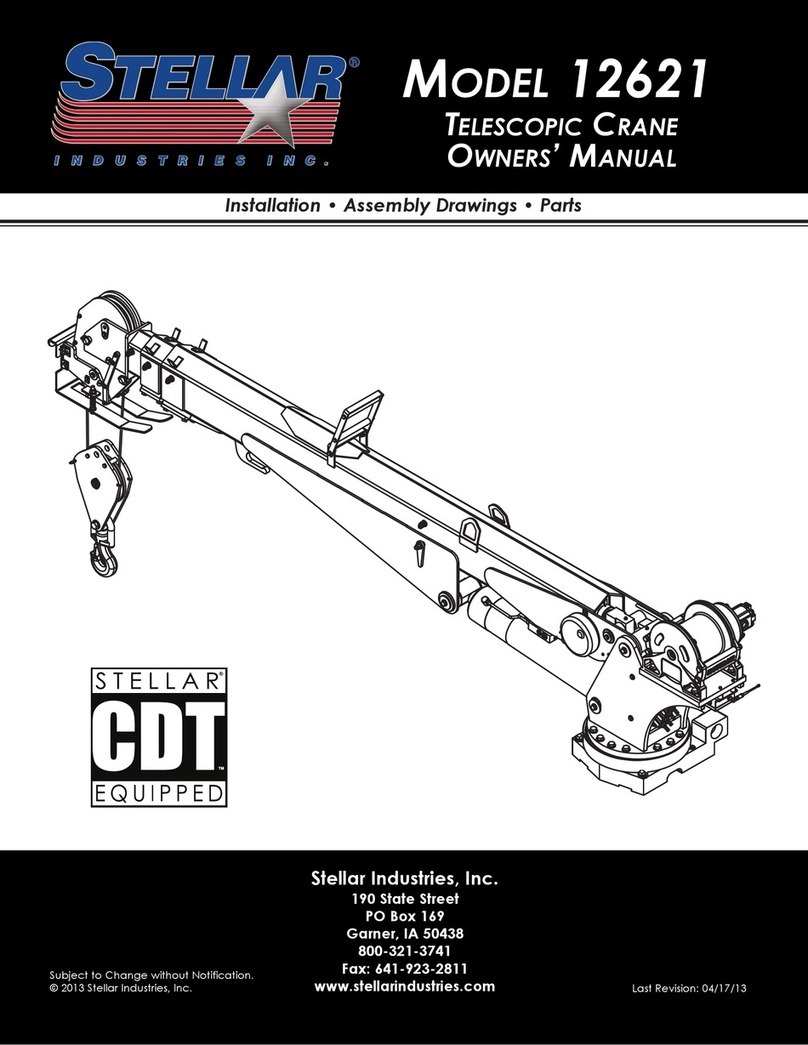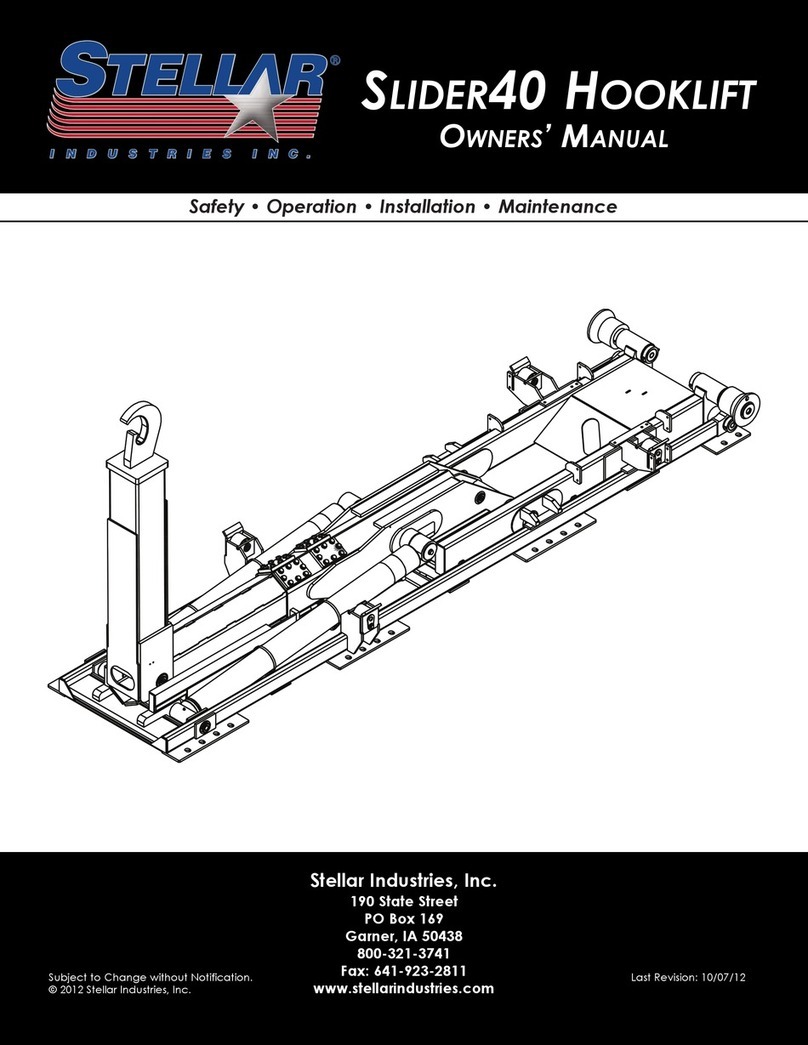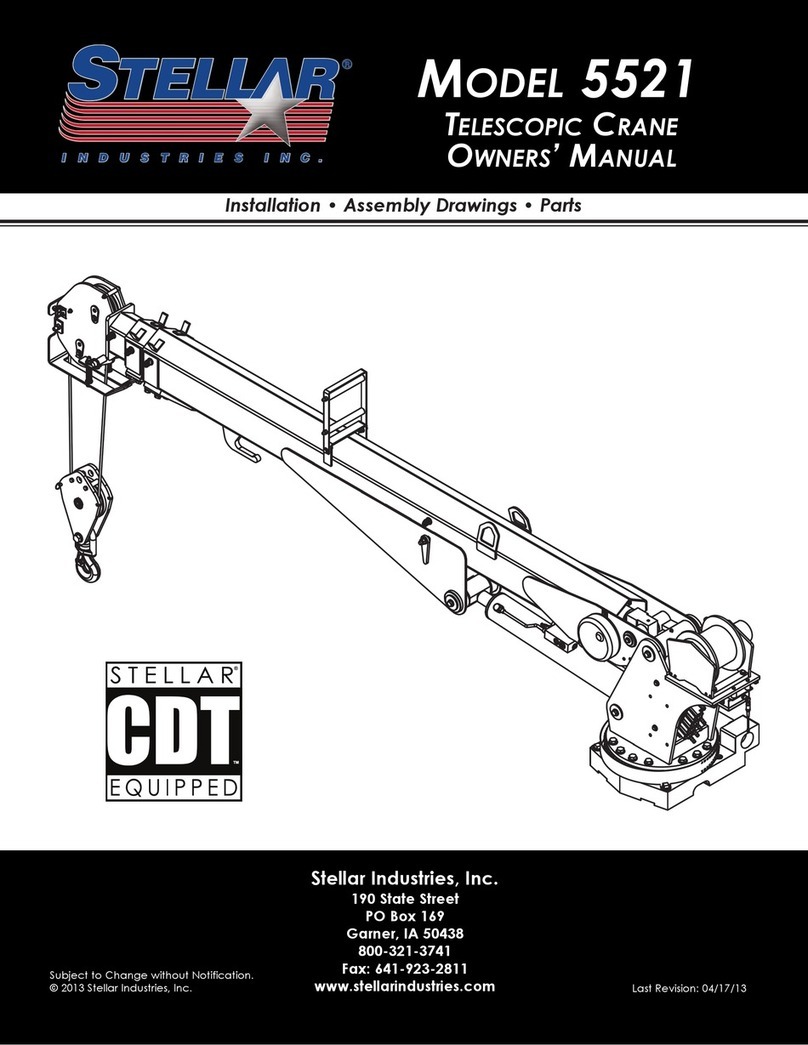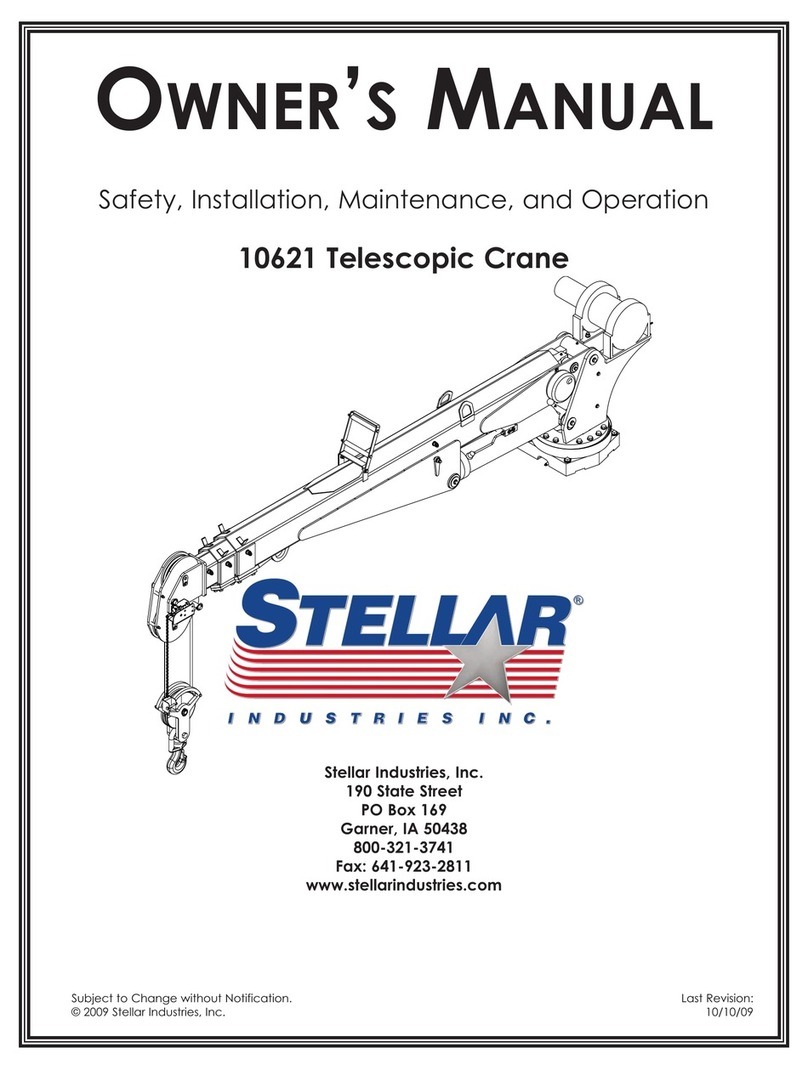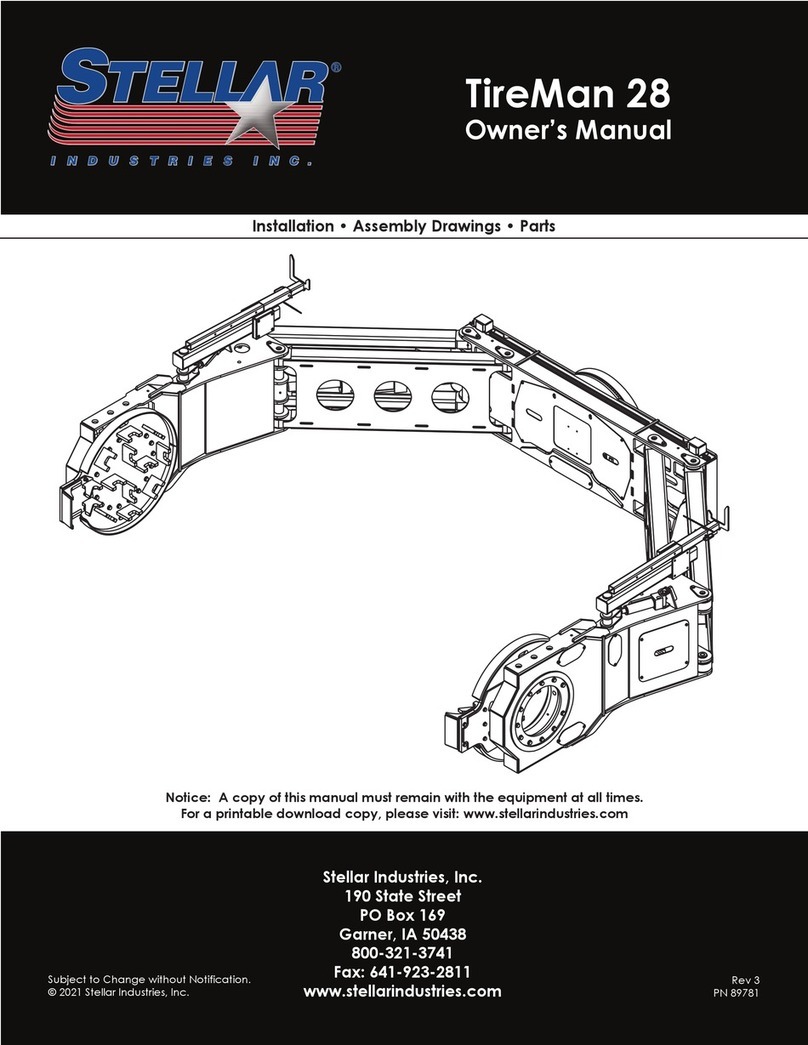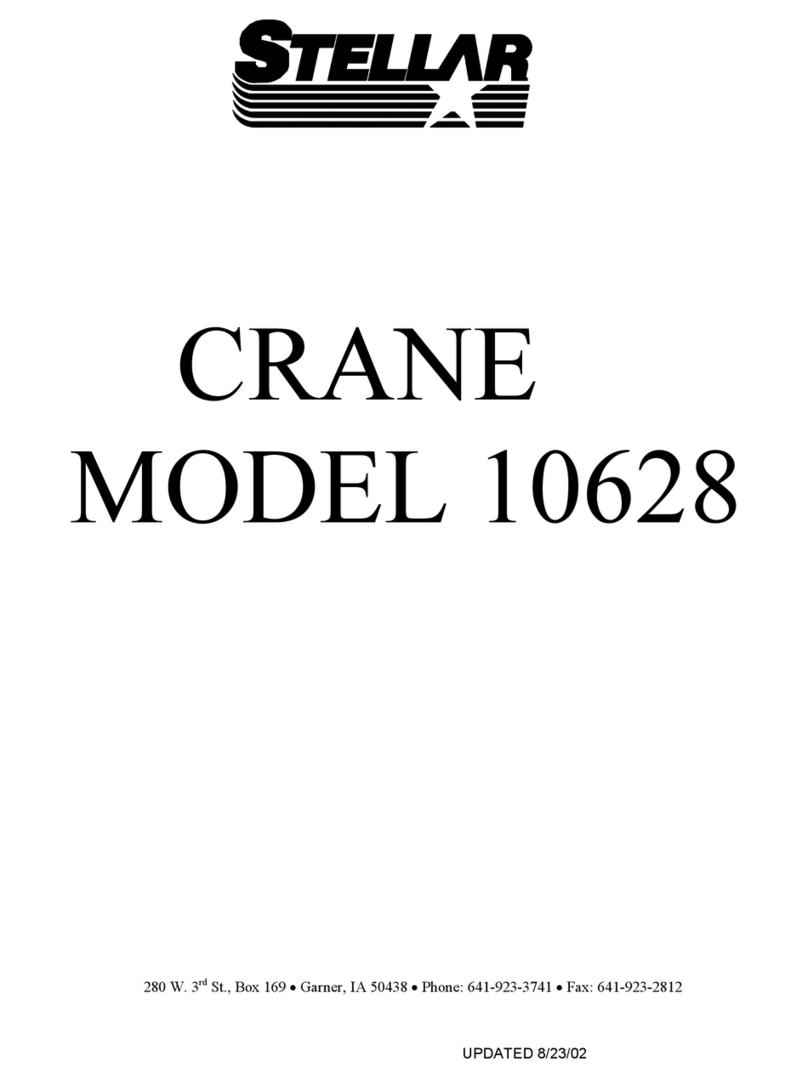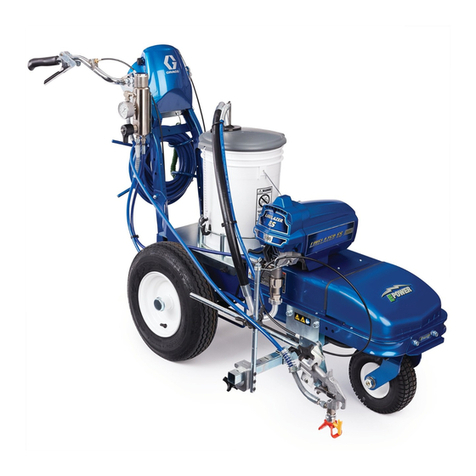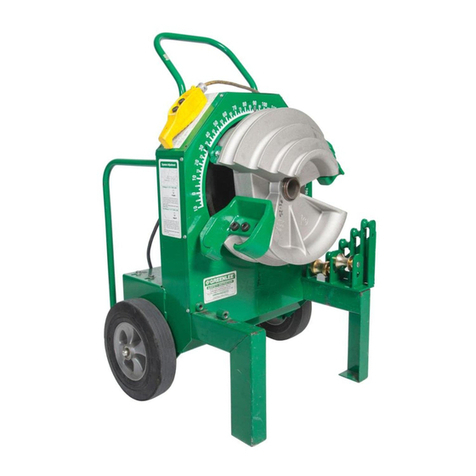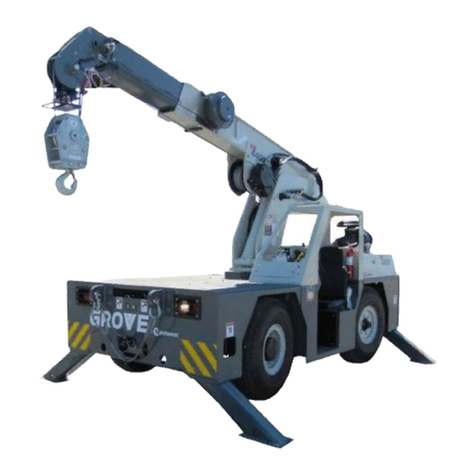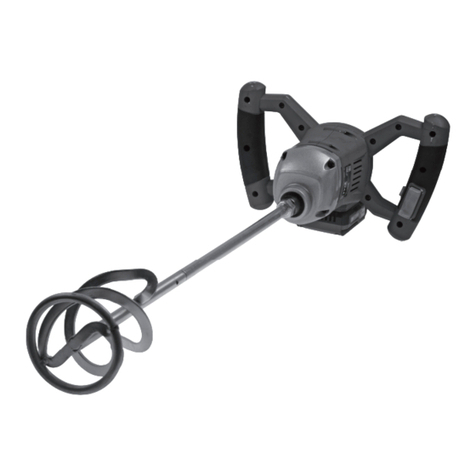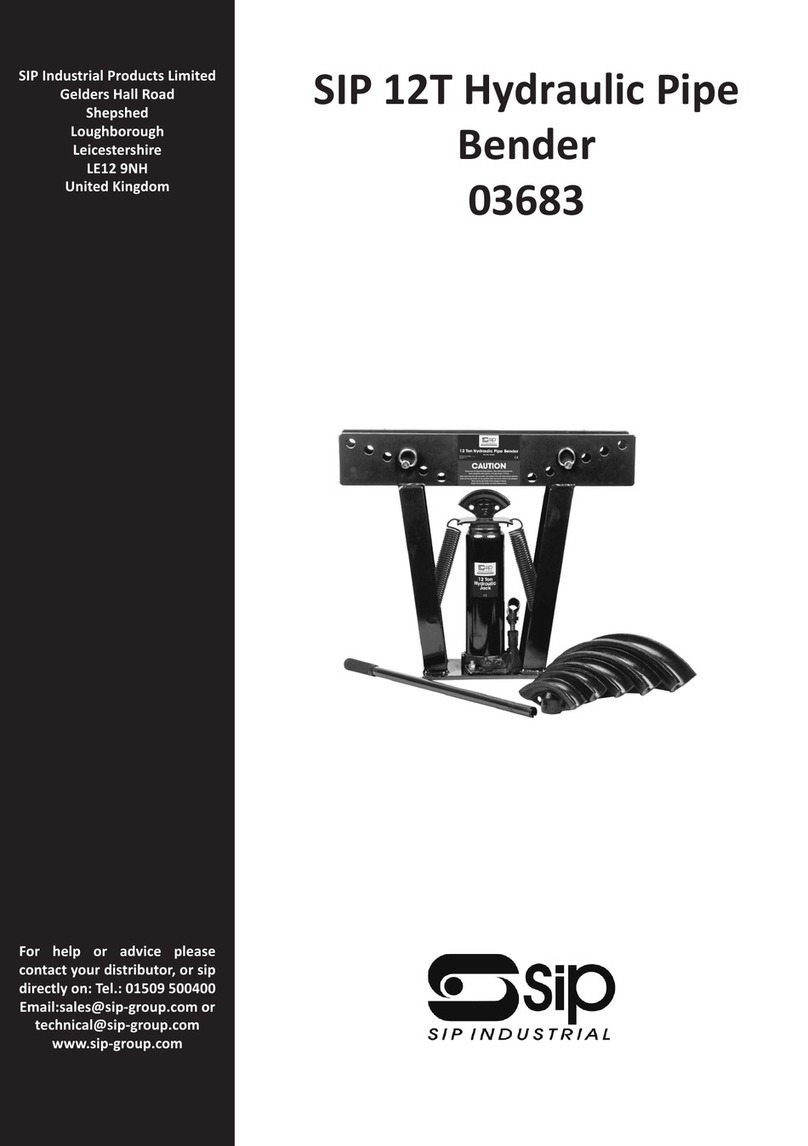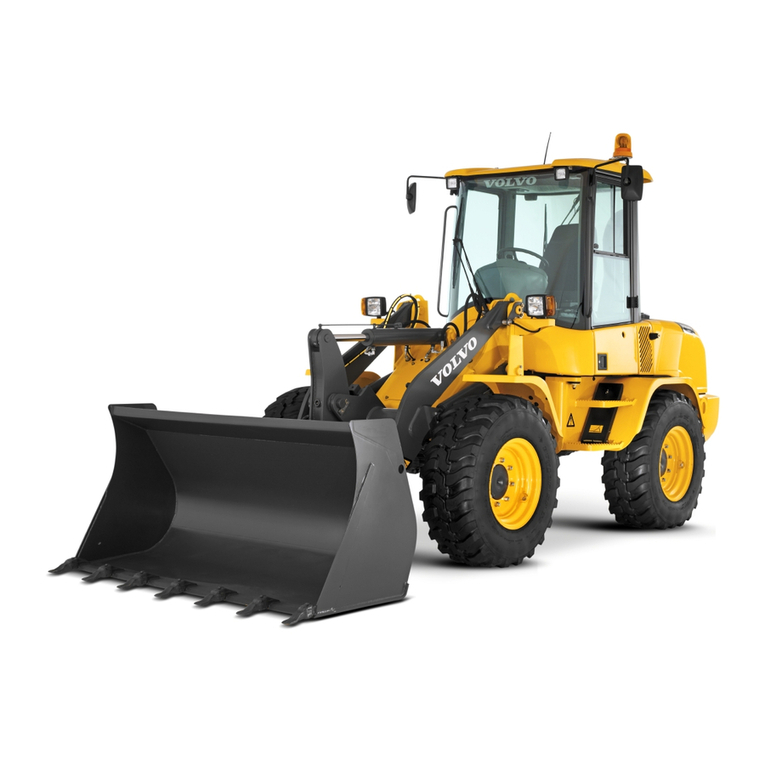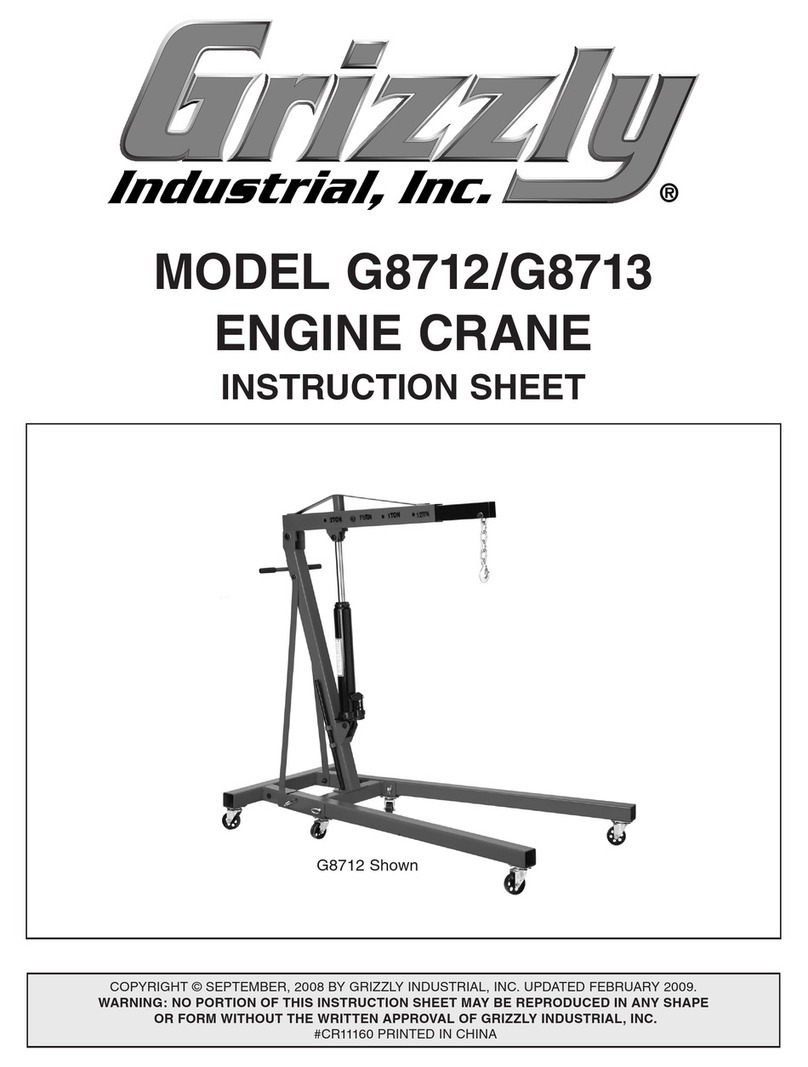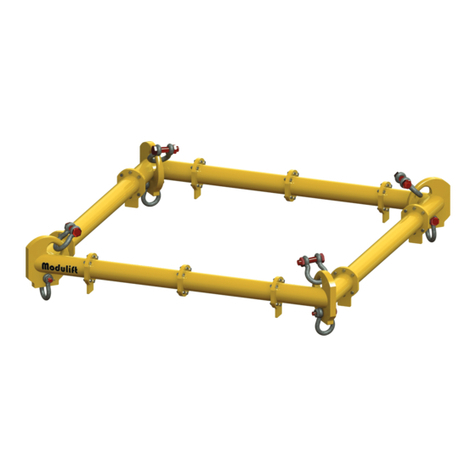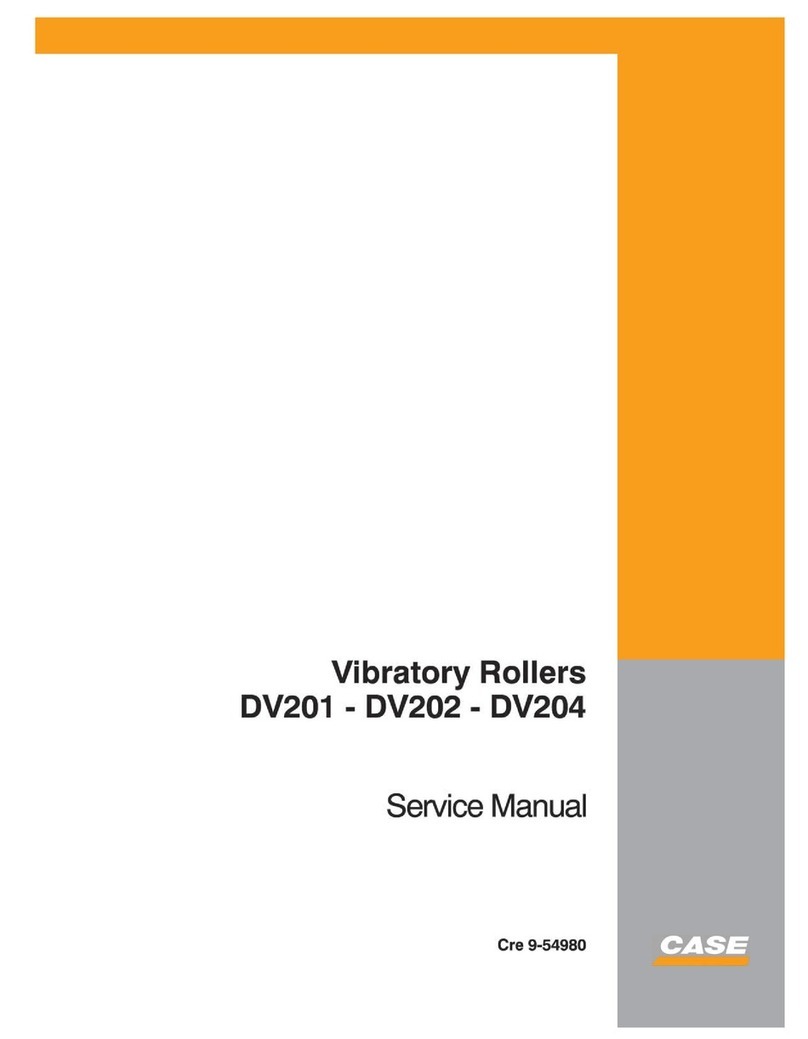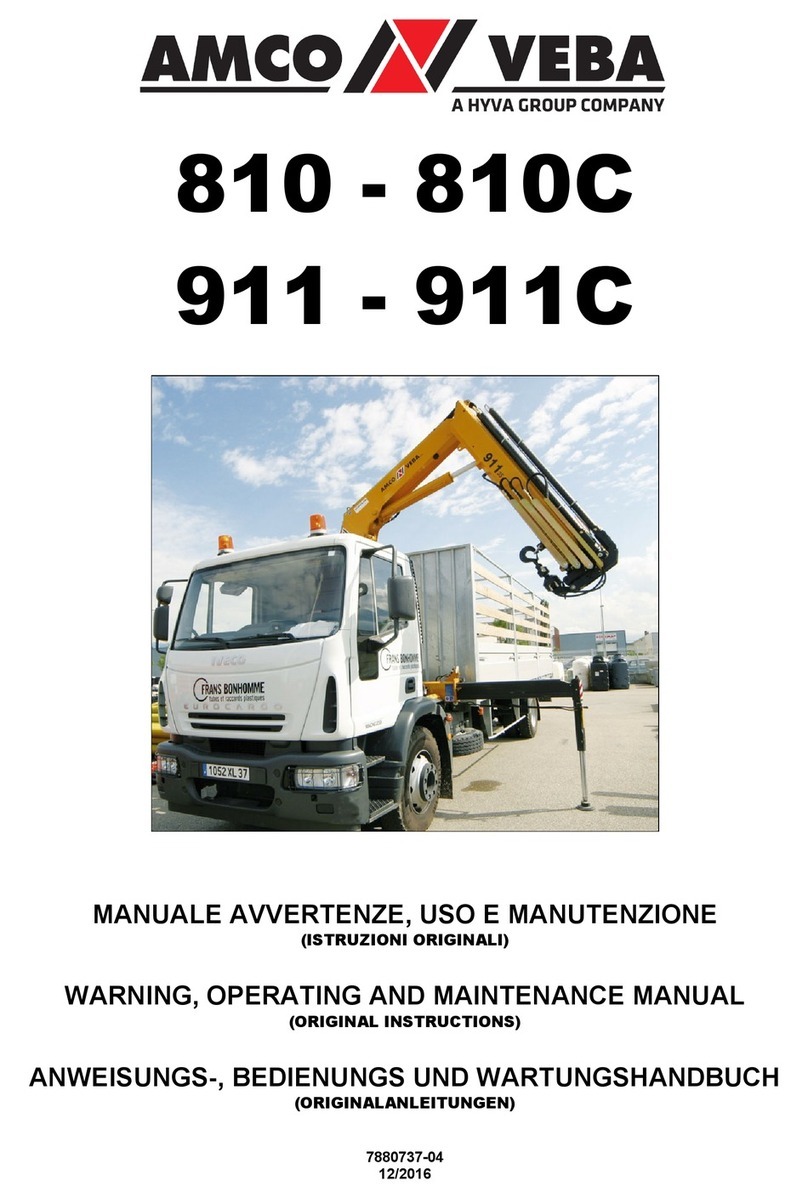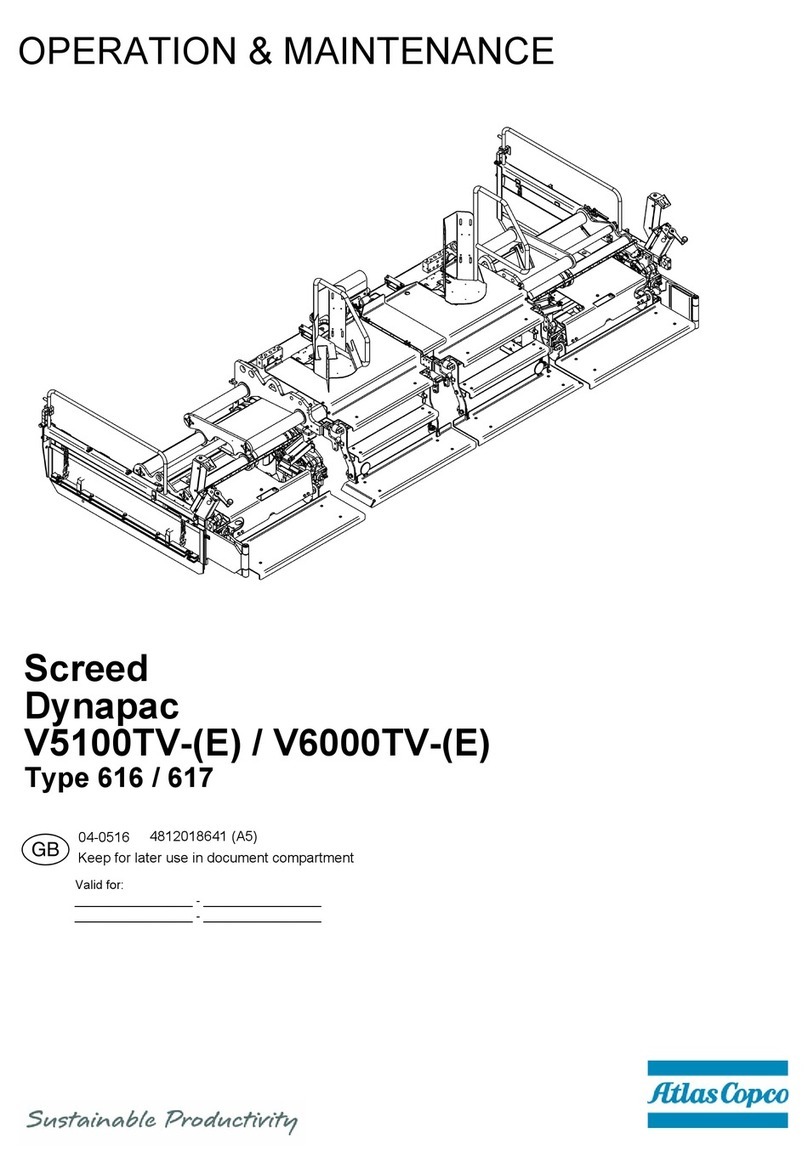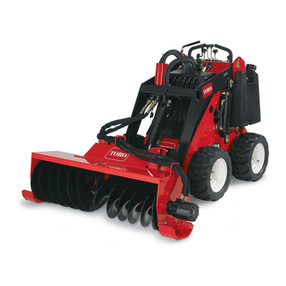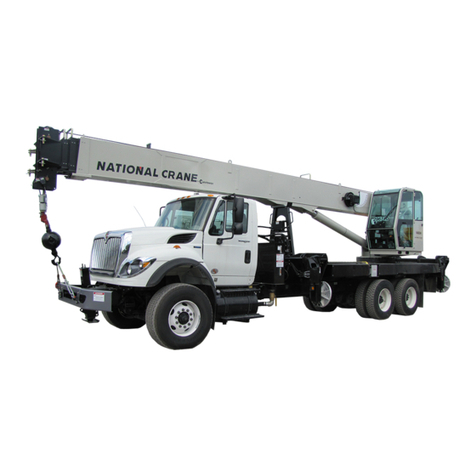Chapter 1 - Safety
1-2
Do not attempt service or repair while the PTO is
engaged.
Be familiar with the remote control and how it oper-
ates before attemptingto lift a load.
Keep clear of all moving parts.
Always wear the prescribed personal safety devices.
Always wear approved accident-prevention clothing
such as: protective helmets, anti-slip shoes, protec-
tive gloves, anti-noise headphones, protective glass-
es, reflective jackets with breathing apparatus.
Consult your employer regarding current safety regu-
lations and accident-prevention equipment.
Do not wear rings, wristwatch, jewelry, loose-fitting or
hanging clothing such as ties, torn garments,
scarves, unbuttoned jackets or unzipped overalls,
which could get caught up in the moving parts of the
crane.
Keep a first-aid box and a fire extinquisher quickly
and readily available on the truck. Regularly check
to make sure the fire extinquisher is fully charged
and the first-aid kit is stocked.
Stellar Industries, Inc. is not liable for accidents
occurred during the usage of the crane caused by
non-fulfillment from the operator’s side of current
rules, laws and regulations.
Do not use controls and hoses as handholds. These
parts move and cannot provide stable support.
The safety instruction plates, notices, load charts and
any other sticker applied to the crane must be kept
readable and in good condition. If necessary, replace
them.
Crane operators should meet the following quali-
fications:
1. Be designated, competent and experienced.
2. Trainees or untrained persons shall be under the
direct supervision of qualified persons.
3. Have sufficient vision and hearing capabilities for
the job being performed. It is recommended to have
vision of 20/30 or better with or without corrective
lenses.
4. Must have the ability to read, comprehend and
interpret all placards, operator’s manuals, safety
codes and other information pertinent to correct, safe
crane operation.
5. Must have normal depth perception and field of
vision (peripheral vision).
6. Possess knowledge of and have the ability to
implement emergency procedures.
7. Be acquainted with all relevant safety standard
codes and applicable governmental regulations.
8. Recognize and be responsible for all maintenance
requirements of the crane operated by him or
trainees under his supervision.
9. Be thoroughly familiar with the crane being operat-
ed and its control functions.
10. Have read and fully comprehend the operating
procedures as outlined in this manual.
11.Operator must not be subject to seizures, loss of
physical control, dizziness, or have physical limita-
tions which could impair the ability to safely operate
the crane.
12. Must have sufficient strength, endurance, agility
and coordination to meet equipment operation
demands.
Crane Controls
1. Be familiar with the sequence and operation of the
crane controls.
2. Each individual crane function should have control
function decals. Replace them immediately if they
are missing or illegible.
3. Move the hydraulic valve control levers in a slow,
smooth motion to allow an even flow of hydraulic
fluid.
4. Keep hands, feet and control levers free from mud,
grease and oil.
